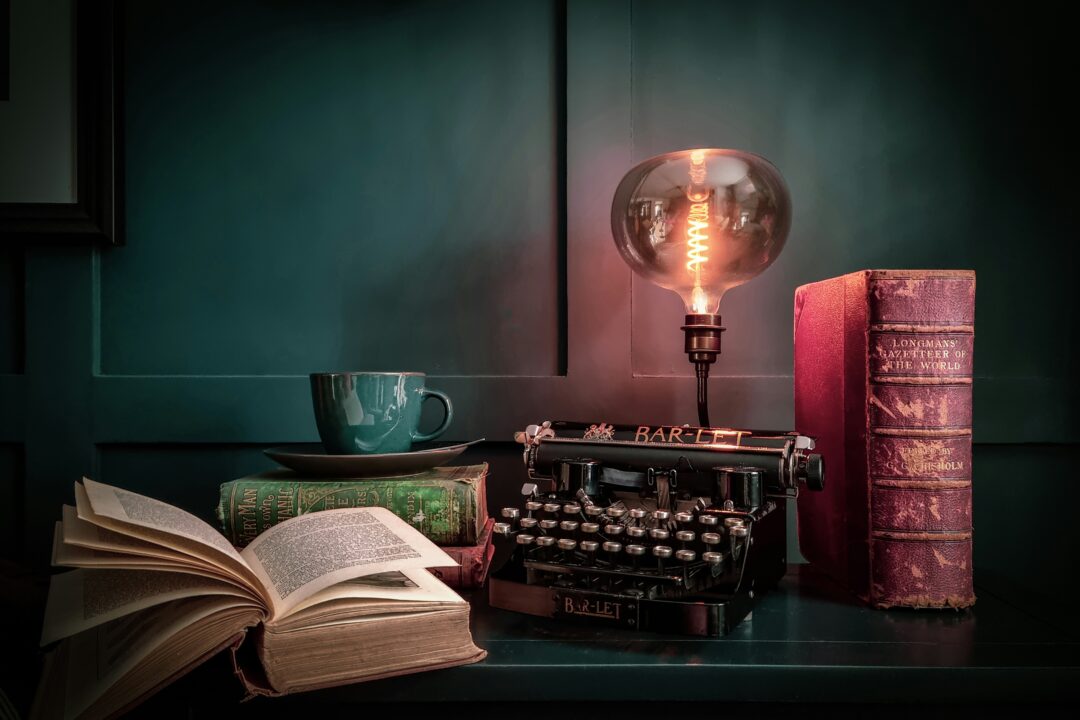Many book lovers and night owls often wonder whether reading in insufficient light can harm their eyes. It’s a concern that stirs up images of squinting, blurry vision, and the potential weakening of visual skills. However, the risk of serious eye damage from reading in the dark is a topic surrounded by misconceptions.
While it’s true that poor lighting can cause discomfort, the use of proper lens coatings and lighting can mitigate many of these effects, ensuring a more comfortable reading experience.
The Truth About Reading in Low Light: Separating Fact from Fiction
Contrary to popular belief, reading in low light does not permanently damage our eyes. However, it can lead to symptoms similar to computer vision syndrome, particularly when alternating focus between a bright screen and darker surroundings.
Dispelling the Myths: Does Reading in the Dark Cause Permanent Eye Damage?
Reading in the dark has long been vilified as a precursor to permanent eye damage. Fortunately, this is more myth than reality. While it can cause temporary discomfort such as dry eyes, necessitating the occasional use of eye drops, reading on a digital device or in a poorly lit room is unlikely to lead to long-term damage to your eyesight. Nevertheless, proper light settings are key to preventing digital eye strain.
Recognizing Immediate Effects: Eye Strain and Discomfort from Dim Lighting
Reading in low light can cause eye fatigue, a condition where the eyes get tired and may lead to symptoms of eye strain, such as blurry vision and irritated eyes. Those who strain their eyes while reading in dim lighting, especially individuals identifying as night owls with a preference for nighttime reading, can experience immediate discomfort, including neck pain. However, this isn’t an indication of permanent damage but rather a sign that the eyes are working harder to compensate for the lack of light.
Considering the Long-Term: How Poor Lighting Conditions Impact Eye Health Over Time
While reading in the dark is unlikely to cause irreversible damage, consistently poor light sources can contribute to ongoing eye discomfort. Over time, this can lead to a habit of squinting, which can cause headaches. To preserve eye health, it’s helpful to use lighting that’s bright enough to see without straining but also equipped with features for reducing glare.
Electronic Devices vs. Physical Books in the Dark: Eye Strain Differences
Reading in low light from electronic devices can lead to different levels of eye fatigue compared to physical books. The backlight from digital screens can strain your eyes more severely, exacerbating symptoms of eye strain. For the night owl whose night vision is taxed by reading in dim lighting, the result can be eyes that get tired faster, along with associated issues like irritated eyes and neck pain.
The Role of Light Type: How Different Illumination Affects Eye Health
Different types of light can have varied effects on eye health, especially when exposure is for extended periods. For instance, the blue light emitted by screens can disrupt melatonin production, impacting sleep patterns and overall eye health.
Color Temperature and Reading Comfort: What You Need to Know
Color temperature plays a significant role in reading comfort. Warmer light can reduce eye strain during evening reading sessions, while cooler, brighter light is better for concentration and alertness during the day. Understanding the effects of different color temperatures can help you create an optimal reading environment.
Best Practices for Healthy Reading Habits
Regular eye exams are crucial for maintaining good eye health, especially for those who frequently use electronic devices. An eye care professional can offer personalized advice on lighting when reading and how to adjust the brightness on devices to minimize eye strain.
Optimal Lighting Fixtures: Choosing the Right Light to Reduce Eye Strain
Reading in adequate lighting is essential to minimizing eye strain, whether you’re using digital screens or traditional books. Light fixtures that mimic natural light can help reduce eye fatigue. In addition, glasses that block blue light can benefit those engaging in prolonged digital device use.
Ambient Lighting Considerations: Enhancing Reading Quality
Creating a reading environment with balanced ambient lighting can significantly enhance reading quality. It helps distribute light evenly, reducing shadows and glare that can lead to eye strain. A well-lit space contributes to a more enjoyable and comfortable reading experience.
Customizing Your Reading Environment: Tips for Those with Vision Conditions
Customizing the reading environment is key for individuals with vision conditions. This includes selecting a light source that provides sufficient illumination without causing a glare, which can be particularly bothersome for sensitive eyes. By tailoring the lighting to individual needs, readers can enjoy prolonged periods with books without discomfort.
Protective Measures for Reading in Dim Conditions
When reading in less-than-ideal lighting, it’s important to take protective measures to prevent straining your eyes and causing potential damage over time.
The Essential Use of a Reading Light: What to Look For
A reading light is a simple yet effective way to guard against straining your eyes. A desk lamp with adjustable brightness and positioning can direct light precisely where needed, ensuring your eyes aren’t working overtime and reducing the risk of damaging your eyes.
Breaks and Eye Health: The Importance of Resting Your Eyes
Taking regular breaks is essential for maintaining eye health when indulging in late-night reading. Continuous reading without adequate rest can lead to eye strain and fatigue. Therefore, it’s advisable to follow the 20-20-20 rule: every 20 minutes, shift your focus to an object at least 20 feet away for 20 seconds.
This practice helps relax the eye muscles and reduce the risk of eye strain, ensuring your reading sessions are enjoyable and safe for your eyes.
Text Size and Visibility: Adjusting for Better Eye Care
Pay attention to text size and visibility to protect your eyes during reading sessions. Small, cramped text can cause strain on the eyes, making it harder to focus and leading to uncomfortable symptoms like headaches and blurred vision.
Opt for larger, clearer fonts and ensure sufficient text and background contrast. These adjustments enhance readability and contribute to better eye care by minimizing the effort your eyes need to exert.
Age-Related Concerns and Reading in the Dark
As we age, our eyes’ ability to adjust to low light conditions diminishes, making reading in the dark a greater concern for eye health.
Vulnerable Age Groups: Eye Strain Risks for Different Demographics
Eye strain risks vary among demographics, with children and seniors particularly vulnerable. In younger readers, their pupils dilate more easily, increasing light sensitivity and irritation. For older adults, the risk of developing conditions like macular degeneration heightens with age.
All age groups should be mindful of these factors and practice safe reading habits to mitigate the potential for blurred vision and other symptoms associated with eye strain.
Pediatric Eye Care: Guidelines and Recommendations for Young Readers
Establishing a conducive reading environment is crucial for young children. Pediatric eye care experts recommend ensuring adequate lighting and limiting screen time to prevent vision problems. Additionally, parents should encourage frequent breaks and monitor their child’s reading posture.
Seeking Professional Advice: When to Visit an Eye Doctor for Regular Check-Ups
Regular check-ups with an eye doctor are vital for early detection of vision issues. If you experience persistent discomfort while reading or notice changes in your vision, it’s time to seek medical advice. An eye care professional can provide personalized recommendations and identify any underlying problems affecting your ability to read comfortably.
Glasses and Reading: Can the Right Pair Help You Read in the Dark?
While glasses can alleviate strain on the eyes, they are not a solution for reading in the dark. Reading in such conditions can cause eye strain, regardless of whether you wear glasses. However, prescription reading glasses with appropriate frames and light filters can help minimize discomfort.
When using electronic devices under fluorescent lights or in a dark room, glasses with a blue light filter may reduce uncomfortable symptoms and protect against potential long-term damage to your eyes.
Keeping Your Eyes Healthy Beyond Reading
Protecting your eyes goes beyond proper reading habits. Avoiding reading in poor light is essential, as it can stress photoreceptor cells in the retina, which may contribute to long-term eye health issues.
Incorporate practices that prevent long-term damage, such as wearing sunglasses in bright sunlight and using adequate lighting during any visual task, to minimize the risk of permanent damage to your eyes.
The Importance of Comprehensive Eye Exams
Comprehensive eye exams are a cornerstone of preventive eye care. These exams can detect early signs of issues that could compromise long-term eye health, including conditions that may not have immediate symptoms. By diagnosing and addressing these concerns early, you can take steps to preserve your vision and prevent potential long-term damage.
Lifestyle Adjustments for Optimal Vision Health
Maintaining optimal vision health involves several lifestyle adjustments. Reduce exposure to screens at night to prevent eye strain and adopt a diet rich in nutrients supportive of eye health.
Additionally, ensure that young children engage in outdoor activities to promote eye development and reduce the risk of developing vision problems. These habits contribute to overall vision health and can enhance your quality of life.
Final Thoughts on Nighttime Reading and Eye Care
Reading in a dark room can be relaxing, but it’s important to consider the potential impact on your vision. Implementing the best practices discussed, from proper lighting to taking breaks, will help minimize the risk of eye strain and ensure that your nighttime reading doesn’t compromise your eye health.




